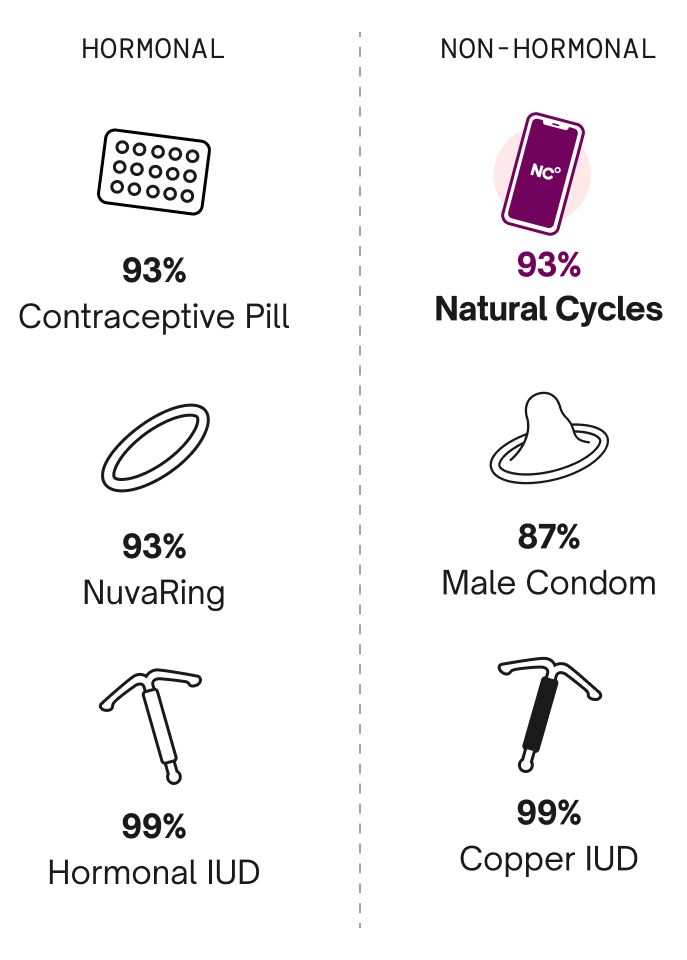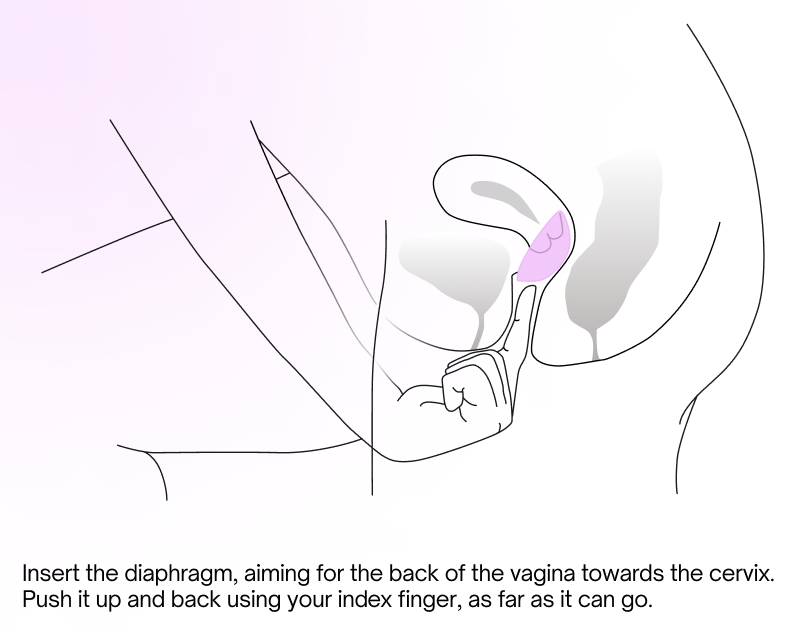Diaphragm: Effectiveness, side effects, and how to use
What is a diaphragm?
First things first, what exactly is a diaphragm?
A diaphragm is a small circle of silicone that looks a little like a shallow saucer. Before having sex, you bend it in half and insert it into your vagina. It’s held in place by your vaginal muscles and covers your cervix, meaning that sperm can’t get any further to fertilize an egg.
You need to coat a diaphragm with spermicide before using it so that if any sperm do manage to get past the barrier, they should be killed by the spermicide.
After sex, you need to leave the diaphragm in place for six to eight hours. This means that the spermicide has plenty of time to do its job, killing any sperm that have entered your vagina. If you remove the diaphragm too soon, it could have an impact on its effectiveness.
How effective is a diaphragm?
So, then, how effective is this type of birth control? With perfect use – meaning that you use it according to the instructions every time and the birth control doesn’t fail in any way – the diaphragm is 84% effective. That means that 16 women out of every 100 using the diaphragm will fall pregnant in a year.
With typical use, the diaphragm is 83% effective, meaning that 17 women out of 100 will get pregnant every year when using it. Typical use can include things like not putting it in properly or forgetting to use it at all.

If you choose to use a diaphragm, it’s really important that you remember to insert it every single time you have sex, and that you use it with spermicide. You should also always make sure that your diaphragm is covering your cervix, and remember that you need to leave it in place for six to eight hours after intercourse. You can leave it in for longer, but don’t remove it earlier.
How do you insert a diaphragm?
It can be a little tricky to get the hang of using a diaphragm, but with a little practice, it should become second nature to you. When you first start using a diaphragm, your doctor or healthcare provider will make sure that you’re using one that’s the right size for you, and they’ll also show you how to insert and remove it.
As a quick guide, though, here’s how to insert a diaphragm:
- Thoroughly wash your hands to prevent any bacteria from entering your vagina.
- Apply spermicide: Coat the inside of your diaphragm with a small amount of spermicidal jelly or cream. Adding a small amount of spermicide around the rim can make it easier to insert, too.
- Find a comfortable position. Some people like to stand with one leg elevated (on a bed or toilet seat, for example), while others find it easier to lie down or sit down.
- Fold the diaphragm in half: You should hold the diaphragm so that the side with the spermicide is facing up.
- Insert the diaphragm, aiming for the back of the vagina towards the cervix. Push it up and back using your index finger, as far as it can go.
- Check the placement: Use your finger to make sure that the diaphragm covers your cervix. Your cervix should feel firm but not bony – almost like the tip of your nose. If you can’t feel your cervix or if it’s not covered, then the diaphragm isn’t in the right position. You’ll need to remove it, apply more spermicide, and insert it again.
You can insert your diaphragm up to two to three hours before you have sex – but don’t put it in any earlier than that, as it will mean the spermicide isn’t as effective. It shouldn’t feel uncomfortable or painful when it’s in place – if you feel any discomfort, then speak to your doctor or healthcare provider.

How do you remove a diaphragm?
Most people find it easier to remove a diaphragm than inserting it. You just need to insert your fingers into your vagina, hook your finger under the rim, and then gently pull it downwards and out.
Once you’ve removed it, you should wash it with warm water and mild, unperfumed soap. Give it a good rinse, and then leave it to air-dry. You should be given a small container to keep your diaphragm in, so pop it in here once it’s dry, and keep it in a cool, dry place.
You should regularly check your diaphragm for damage, holding it up to the light to check for holes, cracks, or thin patches of material.
Advantages of a diaphragm
There are advantages and disadvantages to every type of birth control. Some of the advantages of the diaphragm include:
- Non-hormonal: Diaphragms are a non-hormonal method of birth control. That means if you prefer not to – or can’t – use hormonal contraception, a diaphragm could be a good option for you.
- No side effects: Because diaphragms are non-hormonal, it also means that they don’t have the side effects that some other forms of birth control, like the combined pill or hormonal IUD, do.
- You can put it in at a convenient time: You can insert your diaphragm two to three hours before intercourse, so it doesn’t necessarily need to interrupt sex.
- You’re in control: You don’t need to rely on anyone else, as the diaphragm puts you entirely in control of your own contraception.
Disadvantages of a diaphragm
There are, of course, some disadvantages to using the diaphragm too. It’s important to weigh up both the pros and cons before making a decision about which birth control is right for you. The disadvantages include:
- May interrupt sex: While you can insert the diaphragm a couple of hours before sex, it can get in the way of spontaneous sex.
- You have to remember to use it every time you have sex: If you think you’ll be bad at remembering to use it, you may want to consider a different form of longer-lasting birth control, like the implant or IUD.
- Low protection against STIs: You can’t rely on diaphragms to protect you against sexually transmitted infections.
- Some people are irritated by spermicide: The use of spermicide is essential for a diaphragm to work properly.
Who can use a diaphragm?
Diaphragms are suitable for most people, but there are a few things that may mean it’s not the most suitable method of birth control for you, including:
- If you have an unusually shaped cervix, or you can’t reach your cervix
- If you have weak vaginal muscles and are unable to hold a diaphragm in place
- If you have a sensitivity to spermicide
- If you’ve ever had toxic shock syndrome
- If you’ve had a bladder prolapse repair
- If you get recurring urinary tract infections
- If you have a high risk of getting an STI, for example, if you have multiple sexual partners
Finding the right birth control method for you
Birth control is a very individual choice, and the diaphragm may or may not be the right method for you. There are lots of different factors to consider when it comes to choosing contraception, from its effectiveness, to side effects, to family planning and lifestyle choice – but the most important thing is that we all have access to a multitude of birth control methods, and have the information we need to make an informed choice.
The world’s first birth control app
Cleared by the FDA in 2018, Natural Cycles is 100% hormone-free. It’s the first birth control method of its kind, combining basal body temperature tracking with an algorithm that learns and predicts your own unique cycle. Thinking about going hormone-free? Find out if Natural Cycles could work for you today.
Did you enjoy reading this article?
